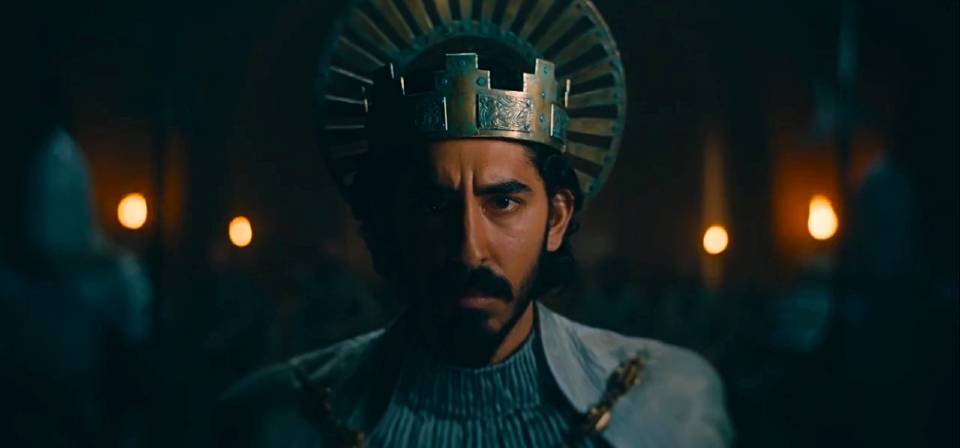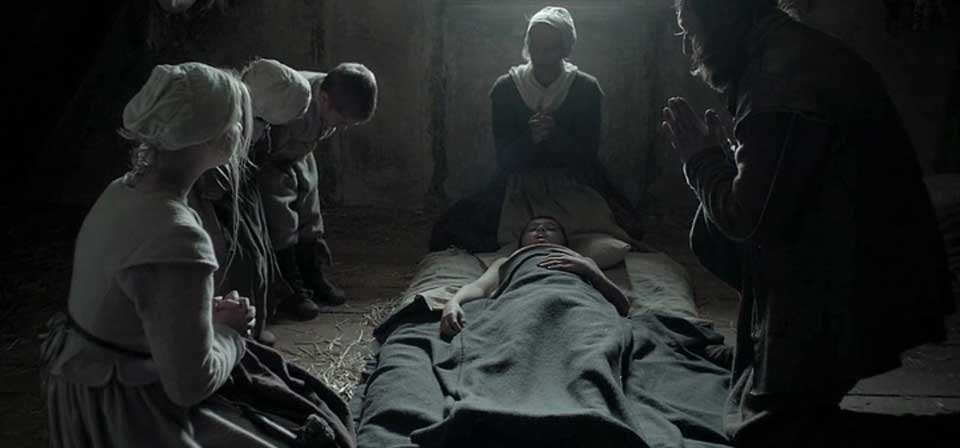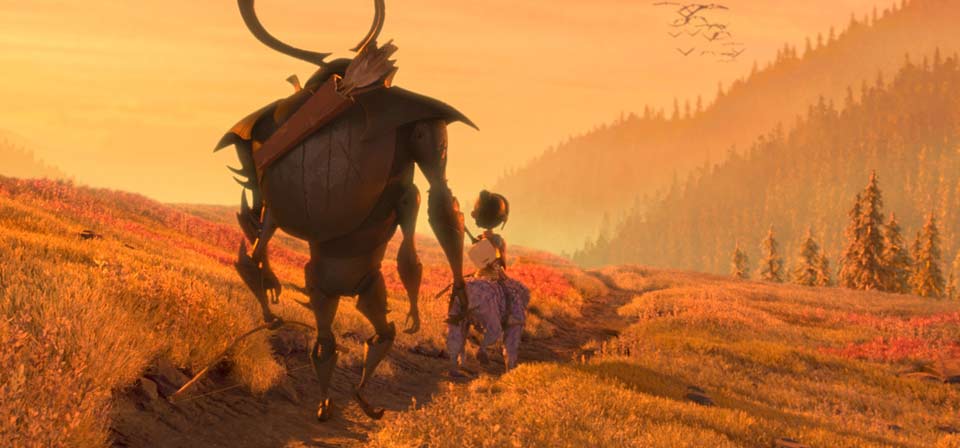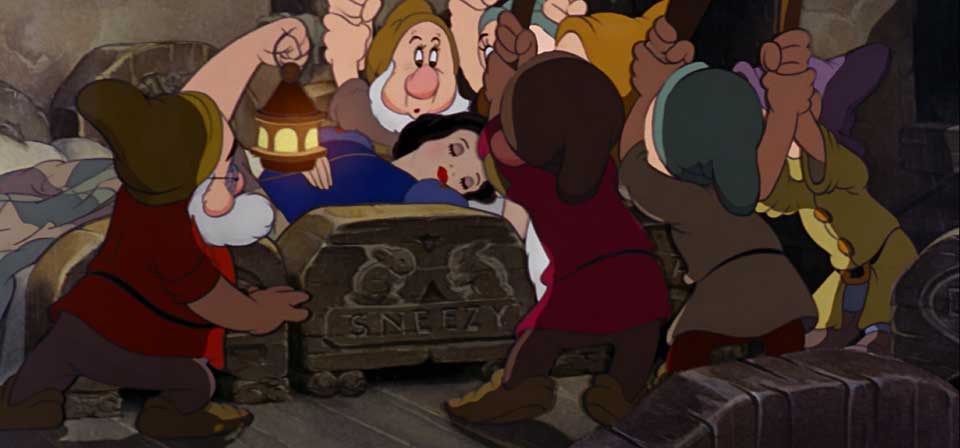Tags :: Witchery

Doctor Strange in the Multiverse of Madness (2022)
I’m thinking of a moment in the original movie in which Stephen looks skeptically at a deeply corrupted individual nattering about the greater good and retorts, “No. I mean, come on — look at your face.” Nobody says that in the sequel, but they should.

A deep cut: The Green Knight
After the library of books that is the Bible, no literary corpus means more to me than Arthuriana, and no Arthurian work means more to me than Sir Gawain and the Green Knight.

An inherited nightmare: Watching the Puritan horror of The Witch with Catholic eyes
What is most unsettling about The Witch is not the manifest presence of the Devil and the malevolence of his minions, but the seeming absence of God and the impotence of the family’s faith and prayers.

Kubo and the Two Strings (2016)
Kubo and the Two Strings comes close to being a masterpiece, and one of the two best American animated films in years, the other being Pixar’s Inside Out.
![The Conjuring [video]](/uploads/articles/conjuring.jpg)
The Conjuring [video]
Thirty years after The Exorcist, when it comes to fighting the powers of hell, the Catholic Church still has the heavy artillery, as Roger Ebert once wrote.
Oz the Great and Powerful [video]
Oz the Great and Powerful in 60 seconds: my “Reel Faith” review.
Oz the Great and Powerful (2013)
Oz the Great and Powerful is brightly colorful, sincere and meant for children. That doesn’t make it good, exactly, but at least it’s basically the right kind of movie, which is saying something these days, alas.

ParaNorman (2012)
Why does stop-motion animation work so well as a medium for the macabre, from The Nightmare Before Christmas to Tim Burton’s Corpse Bride to Coraline?
ParaNorman [video]
ParaNorman in 60 seconds: my “Reel Faith” review.
Snow White and the Huntsman [video]
Snow White and the Huntsman in 60 seconds: my “Reel Faith” review.
Snow White and the Huntsman (2012)
The film transposes its story from the register of fairy tale to that of epic myth — but it’s trying for unironic epic myth, iconic good vs. iconic evil. Iconic evil: check. Iconic goodness: There’s the rub.

Snow White and the Seven Dwarfs (1937)
Walt Disney’s Snow White and the Seven Dwarfs is widely celebrated as a beginning, the first feature-length animated film in Hollywood history. It’s just as correct, though, and perhaps more illuminating, to hail it as a culimination — as the crowning achievement of years of experimentation, discovery, growth and achievement by Disney’s animation team.
Mirror Mirror (2012)
What’s the last movie you saw that created an imaginary world that was actually beautiful, bursting with color and beauty and inspiration? A world that reminded you of the feeling you had as a child the first time you saw Dorothy open that door on the Technicolor world of Oz? A world you would actually like to enter and walk around in?
Harry Potter & the Deathly Hallows: Part 1 [video] (A Review in Verse)
Here’s my 30-second rhyming review of Harry Potter & the Deathly Hallows: Part 1.
Harry Potter and the Deathly Hallows: Part 2 (2011)
Here at last, in the final chapter, the Harry Potter franchise rouses itself toward something approaching greatness.
Red Riding Hood (2011)
Red Riding Hood is a movie of a sort that I would very much like to see if anyone could make it, which is another way of saying that it is not that sort of movie at all. A real Hollywood fairy tale is the rarest thing in the world. Hollywood is more comfortable with myth and legend. Partly, I think, it’s a matter of scale: Mythology provides the sort of sweeping, epic scope that lends itself to big-screen Hollywood feature filmmaking. Fairy tales are smaller and more intimate, and require a lighter touch.
Harry Potter and the Deathly Hallows: Part 1 (2010)
The seventh Harry Potter movie, based on the seventh and final book, is here at last, yet the saga is not over. Extending their biggest cash cow of the millennium into next year, Warner Bros. has split Harry Potter and the Deathly Hallows in two, with Part 2 coming next year, almost a full decade after the series started.
The Princess and the Frog (2009)
There’s a villain with magical powers — but instead of Disneyfied magic, like Aladdin’s friendly genie, the film’s New Orleans voodoo is an occult world of terrifying powers and principalities in which the villain himself is at much at risk as anyone. It’s almost Disney’s most overtly Christian depiction of magic and evil at least since Sleeping Beauty, if not ever — though the waters are muddied by a benevolent, swamp-dwelling hoodoo mama in a sort of fairy-godmother role.
Harry Potter and the Half-Blood Prince (2009)
Potter fans, whether they’ve kept up with the books or not, will find that the latest film continues the trajectories of recent installments — it’s darker, more tragic and more romantic — while setting the stage for the final battle, now planned for two movies.
Harry Potter and the Order of the Phoenix (2007)
The level of magical eye candy is noticeably lower than previous installments… On the other hand, Ron and Hermione, though probably short-changed compared to the book, are better used here than in the previous film. Best of all is Harry’s leading role in Dumbledore’s Army, marking a major advance in proactive engagement from a protagonist who for too much of the first four chapters has been largely passive.
The Chronicles of Narnia: The Lion, the Witch and the Wardrobe (2005)
One of the most magical effects in Andrew Adamson’s The Lion, the Witch and the Wardrobe isn’t rippling computer-generated fur, ice castles, or battle scenes. It’s the wide-eyed wonder and delight on the face of young Lucy Pevensie (Georgie Henley) as she passes beyond the wardrobe for the first time into the winter wonderland of the Narnian wood.
Harry Potter and the Goblet of Fire (2005)
The fourth of seven projected films based on J. K. Rowling’s ongoing adventures of the boy wizard, Harry Potter and the Goblet of Fire represents the midpoint of the series and of Harry’s schooling at Hogwarts School of Wizardry and Witchcraft.
The Seventh Seal (1957)
Starkly existential, boldly poetic, slow and grim, Ingmar Bergman’s great classic The Seventh Seal has haunted film aficionados, baffled and bored college students, inspired innumerable parodists, and challenged both believers and unbelievers for nearly half a century.
The Sacrifice (1986)
To “rip open the inconsolable secret,” to awaken the spiritual hunger for something beyond the materialistic scope of our fragmented, desacrilized modern existence, was the burden of Andrei Tarkovsky, cinematic poet laureate of the Russian soul.
Kiki’s Delivery Service (1989)
A loosely structured coming-of-age story, Kiki’s Delivery Service features one of Miyazaki’s most personable protagonists, a delightful cast of supporting characters, and a rambling, episodic storyline full of charming incident and irresistible imagery.

Andrei Rublev (1969)
The notion of art as a "religious experience" is sometimes bandied about too freely. Tarkovsky is one of a handful of filmmakers for whom this ideal was no cheap or desanctified metaphor, but literal truth.
Harry Potter and the Prisoner of Azkaban (2004)
Where its predecessors felt a bit padded and overlong, The Prisoner of Azkaban feels incomplete and overly edited. If the first two films could easily have been tightened up by a half-hour or so, this one left me wishing for the first time that there were an “extended edition” DVD coming, as with the Lord of the Rings films.
Harry Potter and the Chamber of Secrets (2002)
Harry Potter is back, and in this second outing the stakes are higher, the themes darker, the Malfoys nastier, the action grander, the monsters scarier, the gross-outs ickier, the climax stronger, and the movie longer.
Harry Potter and the Sorcerer’s Stone (2001)
Fans of the books will be gratified by a warm rush of recognition at every turn. From the growing anticipation as the mysterious invitations to Harry at the Dursley’s begin their inexorable multiplication, to Robbie Coltrane’s comforting performance as the genial giant Hagrid, to the dazzling Hogwarts grounds, to the exhilarating speed and excitement of Quidditch, the book’s main pleasures have been expertly realized.
The Missing (2003)
In place of Ford’s iconic but Indian-hating cowboy hero, Howard gives us two white protagonists who are each, in their own ways, the antitheses of the John Wayne character.
The Chronicles of Narnia (1988‑1990)
Beautiful, rugged UK landscapes, splendid old castles and other shooting locations, and some fairly impressive sets help create a sense of authenticity. At the same time, with the earlier episodes especially limited by modest production values, rudimentary special effects, and uneven acting, the Chronicles can’t be held even to the standard of such American TV productions as the Merlin and Arabian Nights miniseries.
Harry Potter vs. Gandalf
What defines morally acceptable use of good magic in fiction? Where, and how, do we draw the line? How do we distinguish the truly worthwhile (Tolkien and Lewis), the basically harmless (Glinda, Cinderella’s fairy godmother), and the problematic or objectionable (“Buffy,” The Craft)? And where on this continuum does Harry Potter really fall?
Recent
- Benoit Blanc goes to church: Mysteries and faith in Wake Up Dead Man
- Are there too many Jesus movies?
- Antidote to the digital revolution: Carlo Acutis: Roadmap to Reality
- “Not I, But God”: Interview with Carlo Acutis: Roadmap to Reality director Tim Moriarty
- Gunn’s Superman is silly and sincere, and that’s good. It could be smarter.
Home Video
Copyright © 2000– Steven D. Greydanus. All rights reserved.